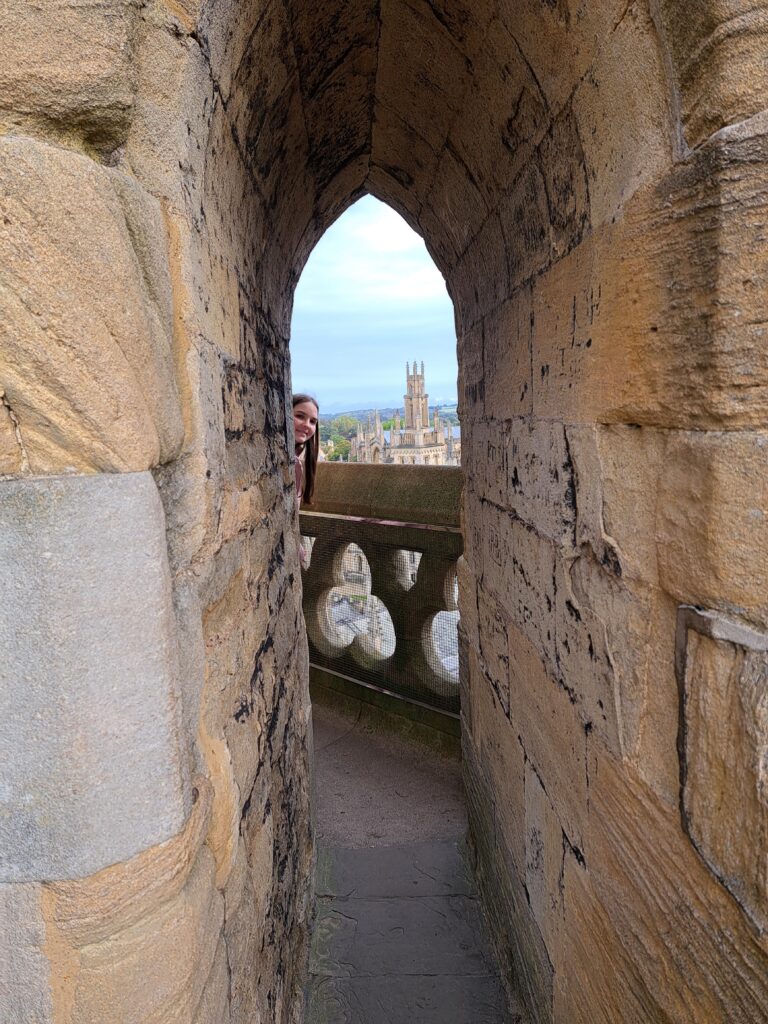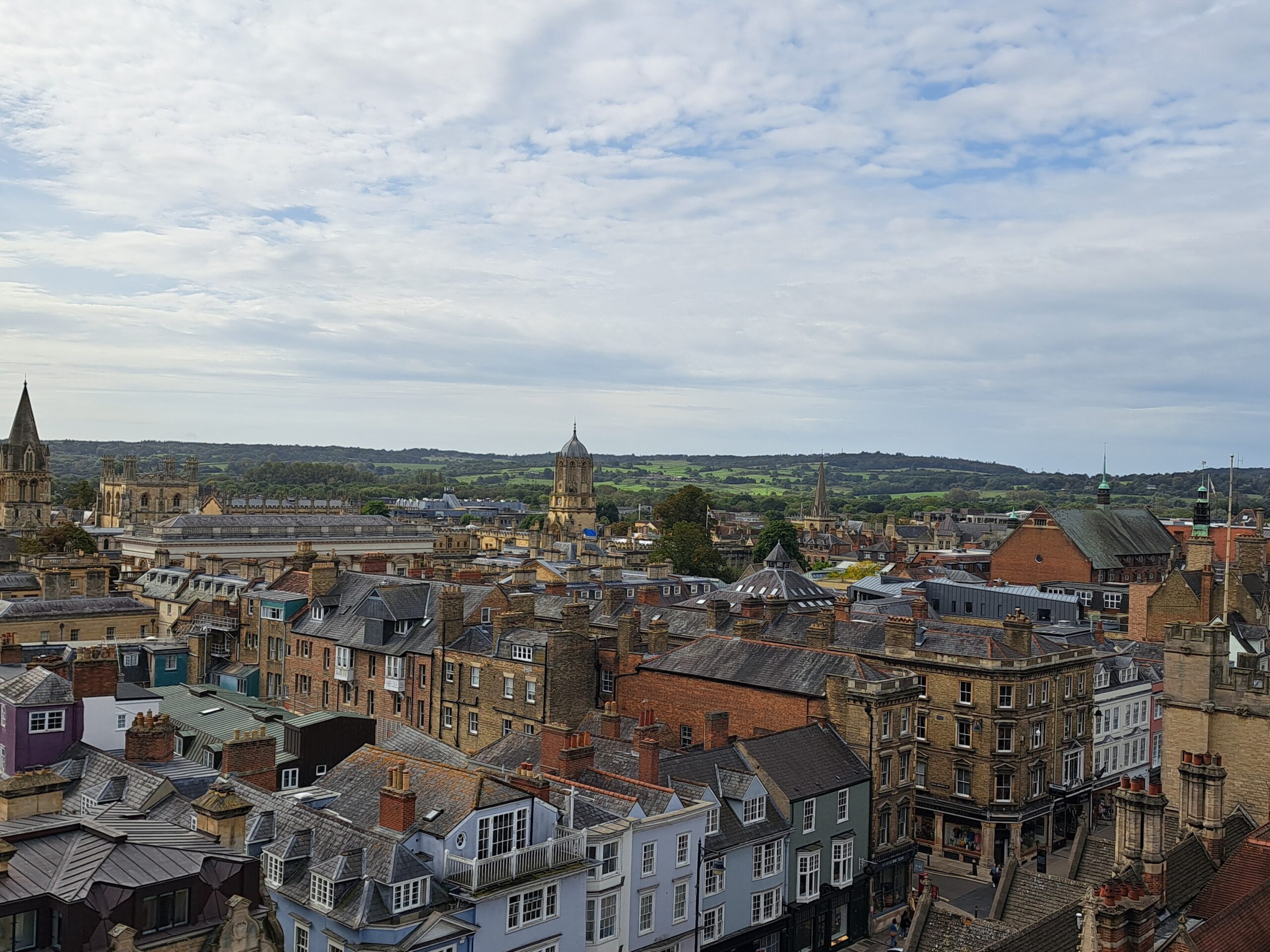“That sweet city with her dreaming spires” is how poet Matthew Arnold so famously and perfectly described the city of Oxford in 1865. And Oxford is indeed a beautiful city: a city of spires, intellect, and a touch of magic. From the attractive and historic university buildings to the wizarding wonders of Harry Potter, every corner tells a story.
If you’re asking, “Is it worth going to Oxford for the day?”, the answer, is a definite “Yes!” However, it is such a diverse city, that to find a place to start exploring is quite a challenge. Here are our tips on places to visit for your perfect day out in Oxford to give you a taste of this fascinating city.
1) Oxford University Church Of St Mary The Virgin
It is the University that gives the city its energy. As you arrive in the centre of the city, you are immediately surrounded by beautiful Gothic-style buildings.
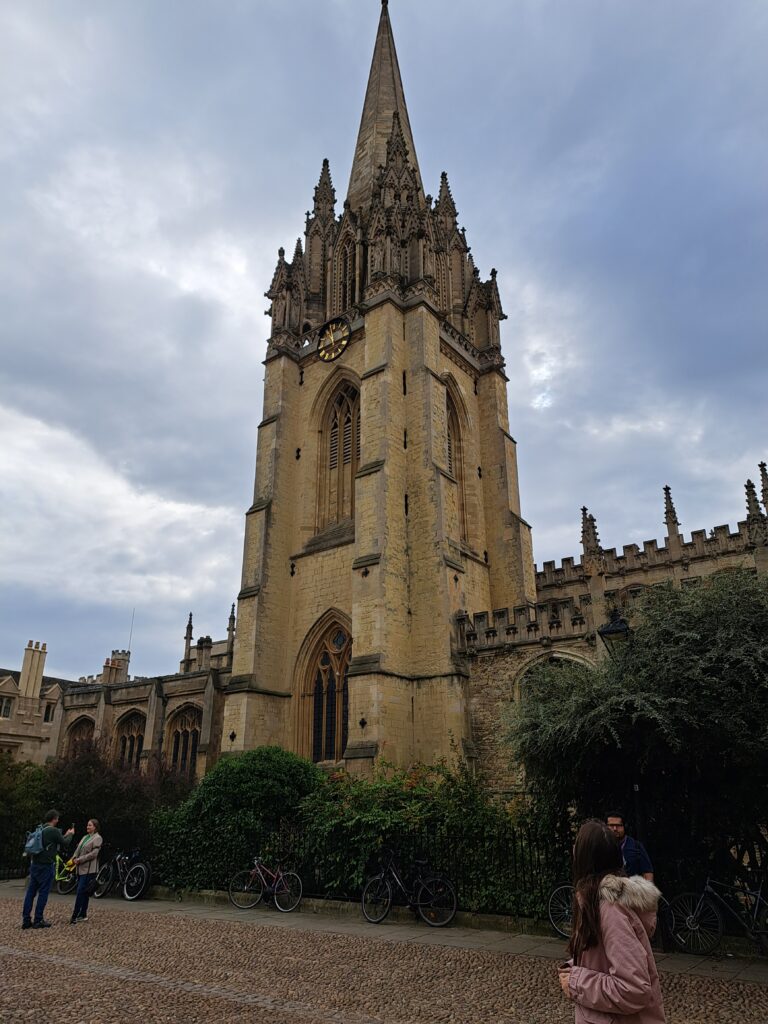
We suggest that you start your day at the University Church of St Mary the Virgin, located in the High Street. It has been at the heart of university life since the twelfth century and has a rich and colourful history. It is a tranquil building to explore, taking in its simplicity and beautiful stained glass windows. Not just a building reserved for history, but a living working community still impacting the city and beyond.
What steals the spotlight at St. Mary’s? It’s undoubtedly the spire. Climb the 127 stairs to the top, and a panoramic spectacle unfolds, offering a bird’s-eye view into the quads of neighbouring colleges, with the distinctive All Soul’s College standing out. This is a great way to start any visit to Oxford – you can even plot your next move from the top of the Tower.
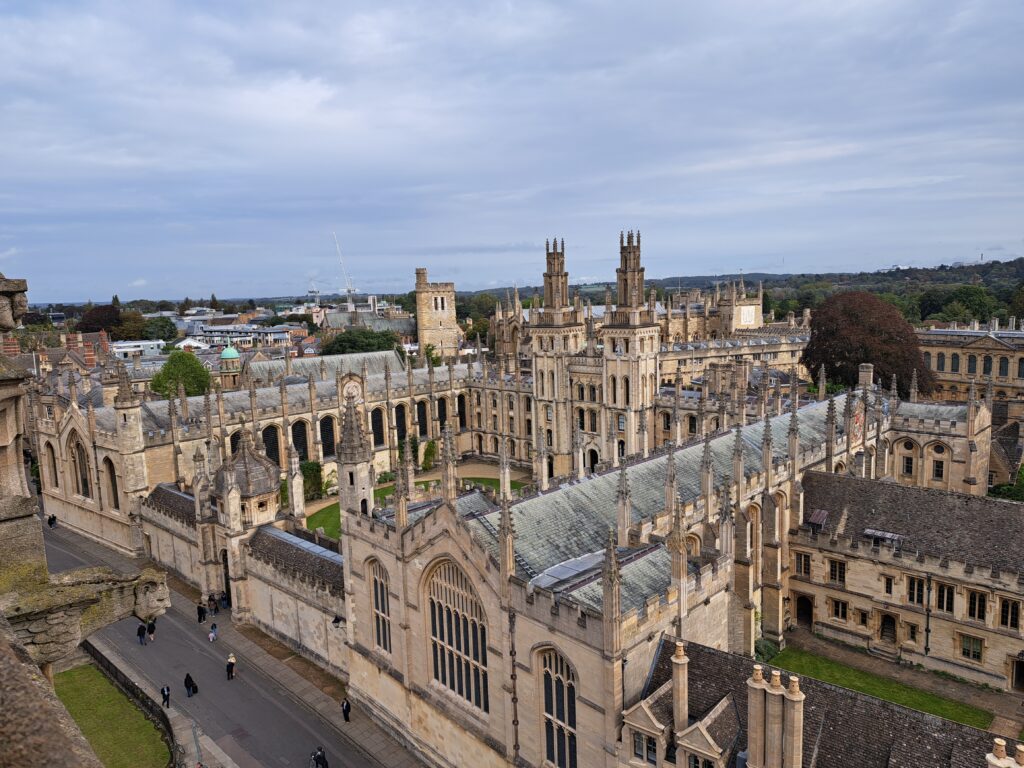
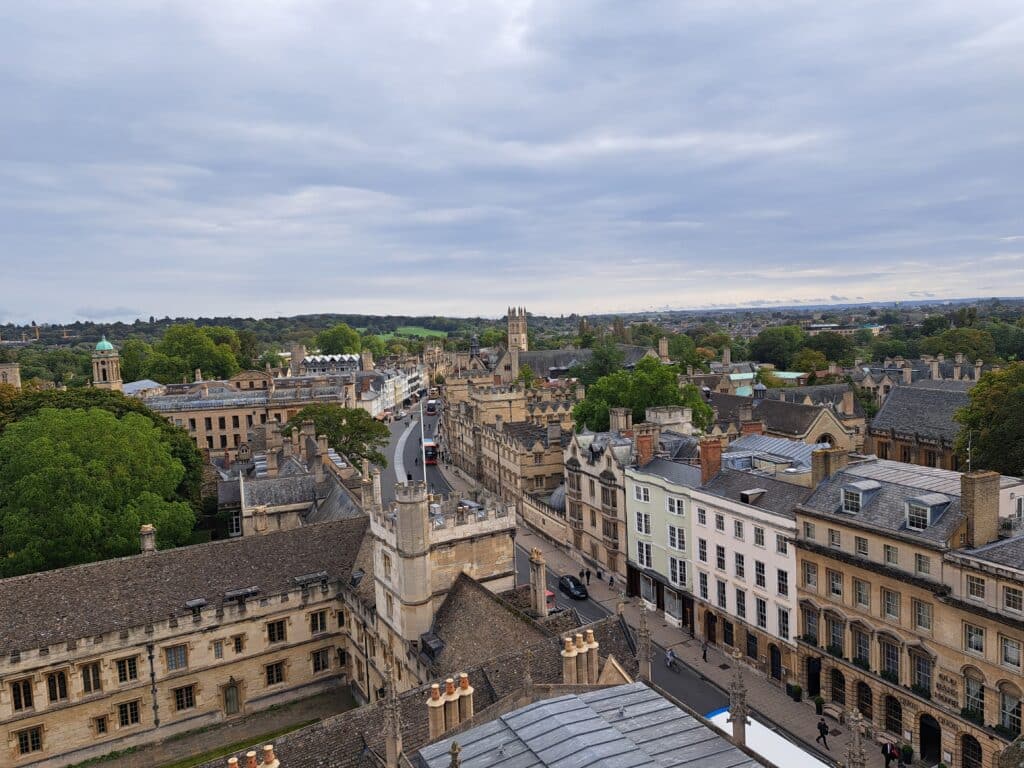
The church is open from 09:30 to 17:00, Monday to Saturday and from 12:00 until 17:00 on Sundays. Visitors are welcome to attend Sunday services too, and they are held at 08:30, 10:30 and 15:30.
Tickets to the Tower cost £5.
2) Bodleian Library
With a whopping 28 libraries in the Bodleian collection, attempting to conquer them all in one go might be a tad ambitious. Here are the must-see spots in the Bodleian Library that you absolutely can’t afford to miss!
Radcliffe Camera
As you leave the University Church via the Radcliffe Square exit, you emerge facing the intriguing Radcliffe Camera. You can’t miss it! It’s one of those buildings that appears in everyone’s photos of Oxford, and for good reason. Its incredible dome is the third largest in the UK, and the building is England’s earliest example of a circular library. Designed by James Gibbs, who also designed St Martins in the Fields in Trafalgar Square, the library was built between 1737 and 1749, and was funded by physician John Radcliffe, hence the name.
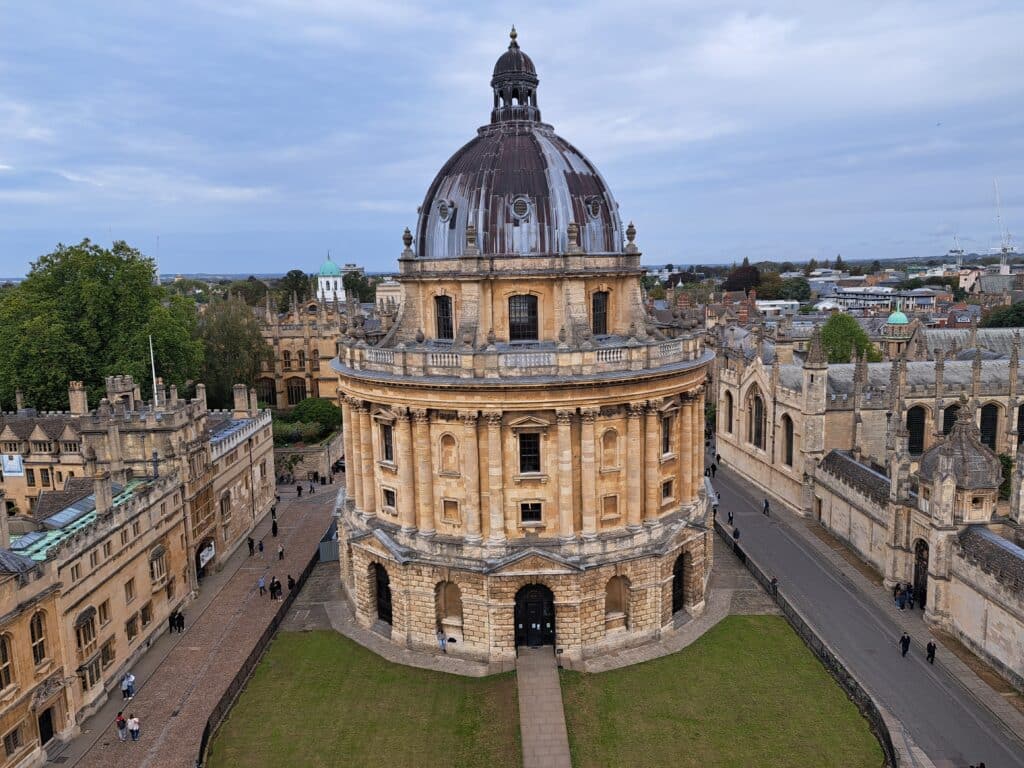
Initially it housed scientific books, but those were moved over time, and it now acts as a reading room for the Bodleian Library. Unfortunately, only students are allowed to use the reading room, so you have to be satisfied with admiring its architectural style and beauty.
Old Bodleian
Moving north, you come to the Old Bodleian. You can also access the building via Catte Street to the east, through the impressive Great Gate. With its mediaeval-panelled frontage, this iconic building boasts three reading rooms dripping with history, the most well known being the Duke Humfrey’s Library. To add to the intrigue, this library, the oldest of all of them, has got a secret tunnel named the Gladstone Link connecting it to the Radcliffe Camera!
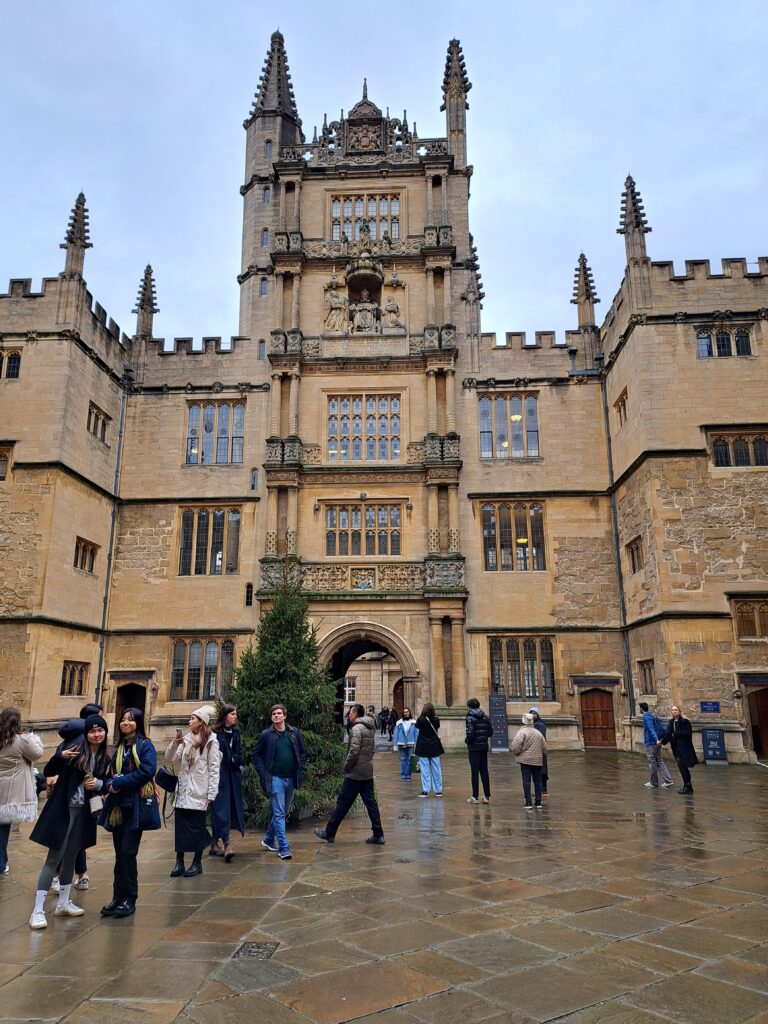
Stepping into the Old School Quadrangle is like stepping into another world! On the west side of the quad lies the Divinity School. Built between 1427 and 1483, this Gothic beauty was originally intended for lectures and discussions on theology, which still happen here today. It can be accessed through the glass doors behind the statue of William Herbert, third Earl of Pembroke.
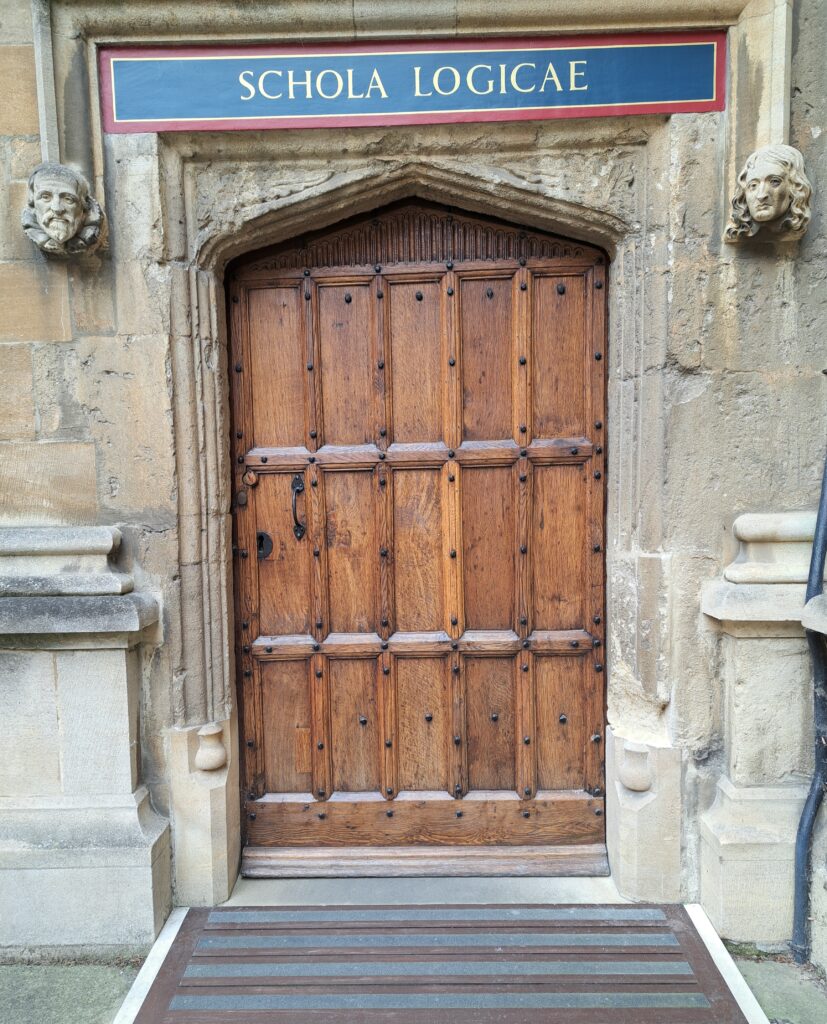
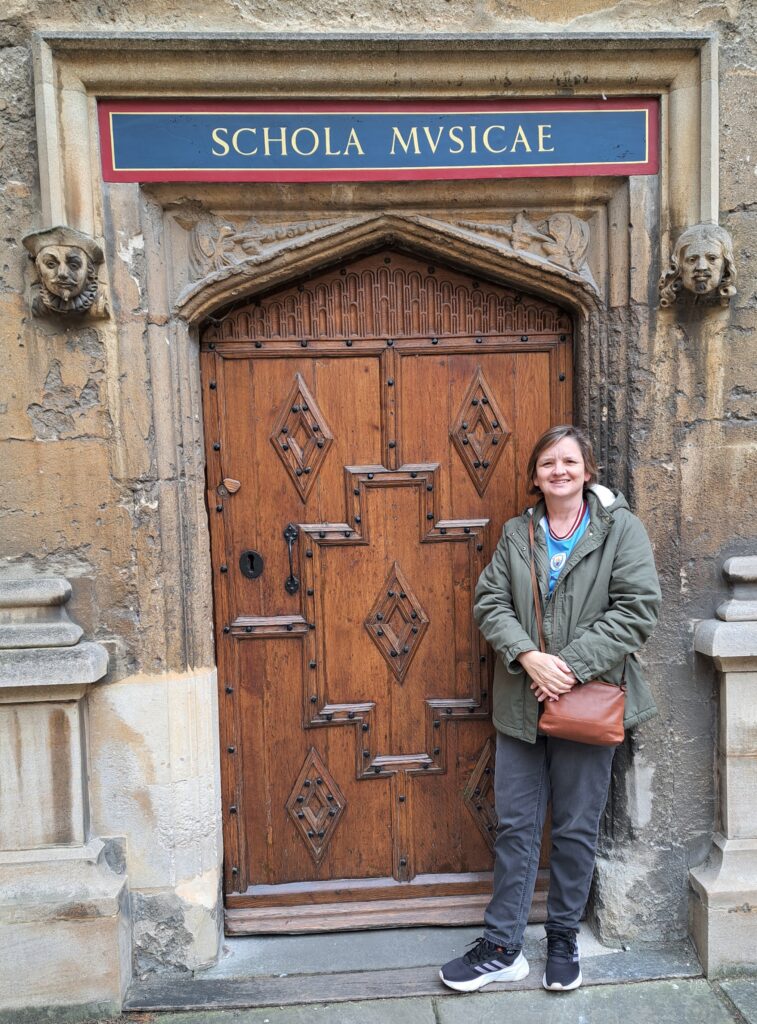
All around the quad are doors that once led to different schools’ libraries. We loved all the different doors and the areas of learning they represented. It was fascinating to simply wander around the quadrangle and let our imaginations take us back to those times.
Now, for the Harry Potter connection! The Bodleian Library, with its enchanting ceilings and magical courtyards, made a cameo in the wizarding world. The Divinity School and Duke Humfrey’s Library played starring roles – the Divinity School acted as the Hogwarts infirmary, where Madam Pomfrey worked her magical healing wonders while upstairs in Duke Humfrey’s Library was where Harry and crew sneaked around under the invisibility cloak, hunting down the restricted section of the library.
Entrance to the courtyard is free, and to the Divinity School is £2 a person or £5 a family.
Guided tours leave the Weston Library on Broad Street daily and cost a range of prices.
3) University Colleges
Every time we have ventured out to Oxford, the University Colleges have been closed to the public. Nevertheless, simply wandering the streets and admiring them from the outside has always sufficed. As you wander down Catte Street, you will pass All Souls College on the right, followed by Hertford College. One of our favourite colleges is Trinity College, just next to Weston Library. We enjoyed walking down Parks Road, peering through the giant blue gates into the college gardens. If you’re lucky, you will hear students practising their music from the streets, just as we did.
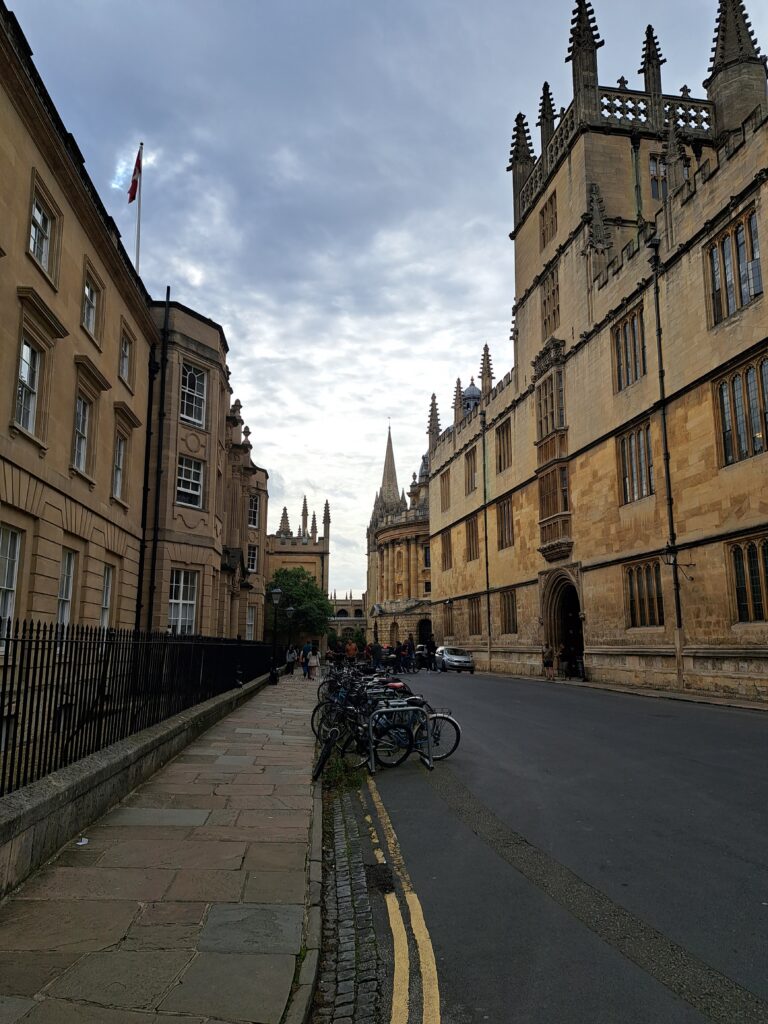
Another great college to visit is Balliol College. Established in 1263, it is the oldest college in Oxford. Getting to this Gothic styled college involves a short four minute walk east along Broad Street.
It is fascinating to read and hear about illustrious Oxonians who either studied or taught at these famous colleges. Amongst them are J.R.R. Tolkien, Oscar Wilde, HM King Abdullah II of Jordan, Dr Frene Ginwala, former Speaker of the South African National Assembly and John Wesley.
4) Hertford Bridge a.k.a. Bridge Of Sighs
Bridging the old and new in Oxford is Hertford Bridge, commonly known as the Bridge of Sighs. Even though it resembles the Rialto Bridge in Venice more than its famous namesake, the name has stuck.
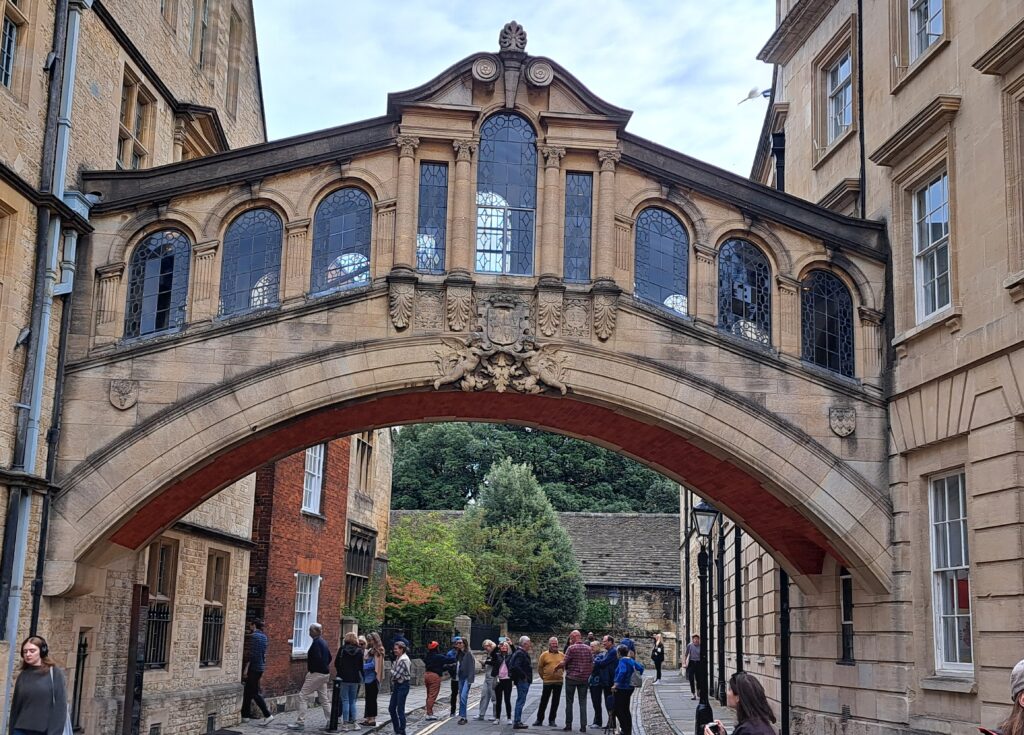
Its real purpose was to link the two different quads of Hertford College across New College Lane. After its completion in 1914, all sorts of strange stories emerged about its nickname, but all are false. One interesting event occurred at the bridge’s centenary when celebrations involved playing the sounds of sighs that the staff and students had recorded. Perhaps all the sighing represented the pain associated with the writing and marking of examinations!
5) Oxford University Museum of Natural History
There are a number of splendid museums in Oxford, such as the Ashmolean Museum, Museum of Oxford and Story Museum, however realistically, you are only able to take in all that these museums have to offer by visiting one at a time on different days. Trying to fit more than one in one day, is too much of a sensory overload!
With this in mind, we recommend visiting our favourite of all the Oxford museums – the Oxford University Museum of Natural History. We have spent hours in this museum alone, and I still don’t think we’ve seen every exhibit.
The museum is over 160 years old and the architecture is a fascinating Victorian Neo-Gothic style, the interior reflecting strong links to nature, science and art. It is bright and airy, and the exhibits are displayed over two huge levels.
Among the central exhibits featuring the dodo and dinosaurs, you’ll discover a captivating blend of contemporary designs housed within restored Victorian cabinets. It’s a visual feast across various themes, from Primates to the History of Life, Vertebrates, Invertebrates, and Rocks and Minerals.
But this museum isn’t just about observing from a distance—there are actual exhibits where the instruction is “Please touch.” These include two bears, a fox, and other intriguing taxidermy specimens. For those with a fascination for the cosmos, there’s a meteorite and an impressive collection of large fossils and minerals, all for touching!


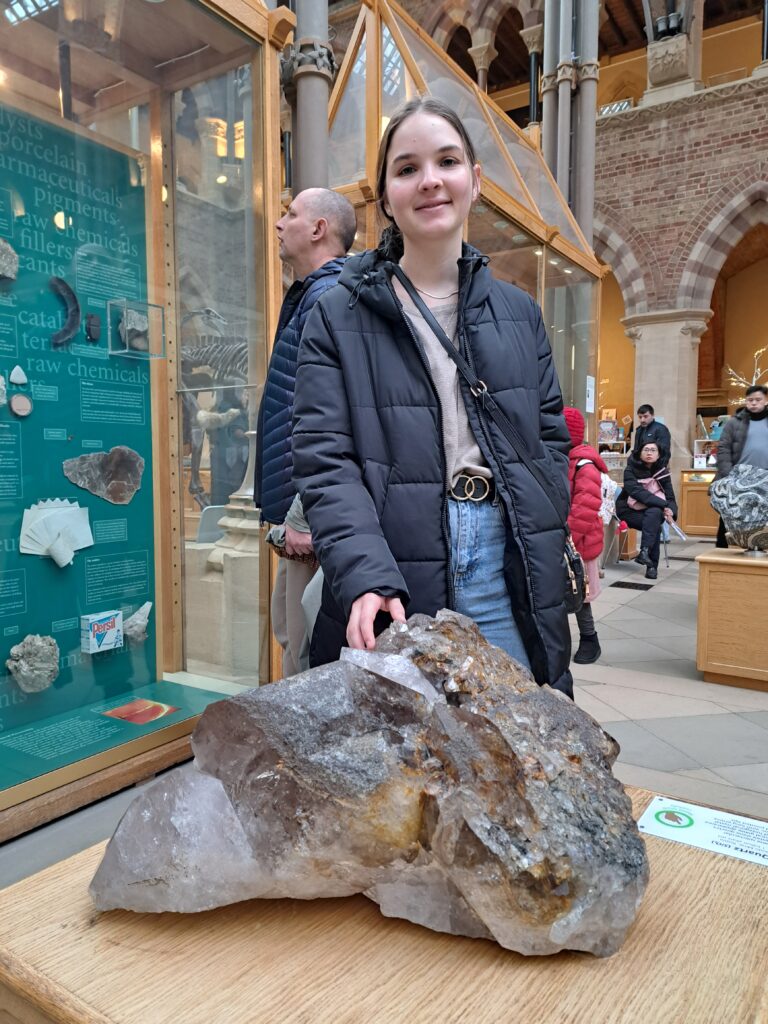
Life-sized dinosaur reconstructions and a fascinating parade of mammal skeletons brings the prehistoric era to life. We particularly enjoyed the sections on rocks, fossils, metals and rocks. Gary loved the parts about all the organisms found in rivers and oceans over millions of years. And of course being able to see the almost complete remains of a Dodo is something special too.
The museum is open from Monday to Sunday from 10:00 till 17:00. Entrance is free.
6) University Parks and River Cherwell
After a sensory feast at the Oxford University Museum of Natural History, a lovely walk in the University Parks nearby comes as a welcome break. Spanning approximately 70 acres, the University Parks provide a beautiful green space for relaxation, sports, and leisure. The parks are owned and maintained by the University of Oxford and are open to the public. An added bonus is the J.R.R. Tolkien Memorial bench and this blogger and Hobbit fan did not miss the opportunity to sit here. Sometimes, happiness is as simple as a well-placed seat and a moment of quiet reflection, much like those found in the pages of Tolkien’s enchanting tales.

The River Cherwell is a tributary of the River Thames, and its gentle flow adds a tranquil ambiance to the city. Punting on the Cherwell is a popular pastime, especially in the warmer months.
7) Anyone for Coffee?

There are a number of great places to have a coffee or something else hot to drink. There are the usual good chain cafes such as Black Sheep Coffee in the High Street. We enjoyed a little coffee shop called Italiamo Cafe in Broad Street, right near the outdoor market. We had really good cappuccinos there and the service was good too. Their pastries are fabulous too.
The High Street Cafe is also a lovely little coffee shop conveniently located near the bus top to Reading. Our Oxford day trips have often ended with a coffee and sponge cake treat at this cafe.
If you have wandered onto the other side of town to the Covered Market, a coffee from Colombia Coffee Roasters is always worthwhile, but be warned, they are always extremely busy.
8) Where To Eat In Oxford?
To be honest, we have found the pubs and restaurants in Oxford to be much more expensive than elsewhere. We have tended to buy our meals from the outdoor markets, and they have always been fresh and tasty, as well as reasonably priced. We have enjoyed the food at the market in Broad Street and the Covered Market. The day we visited the Gloucester Green Market, it was closed as it was just before New Year. It has a great reputation, so we look forward to sampling some of their edible delights in future.
9) Oxford Walking Tours
When we visit a place for the first time, we prefer doing our own research and embarking on self-guided walking tours of the places that interest us. If you prefer guided walking tours, then Footprints tours are highly recommended. Their free Oxford Walking Tours are about two hours long and conducted by university students. They also offer bicycle tours, which we find most appealing and may try someday too.
10) How To Get To Oxford?
Oxford is conveniently positioned and easy to access by different modes of transport.
From London:
- By train from Paddington Station – about an hour
- By bus – one and a half hours
- By car – one and a half hours
From Reading:
- By train from Reading Station – 30 minutes
- By bus – one and a half hours
- By car – 45 minutes
With so much to see and do in Oxford, we hope you have found some useful tips and enjoy spending time in the “city of dreaming spires” as much as we do.
